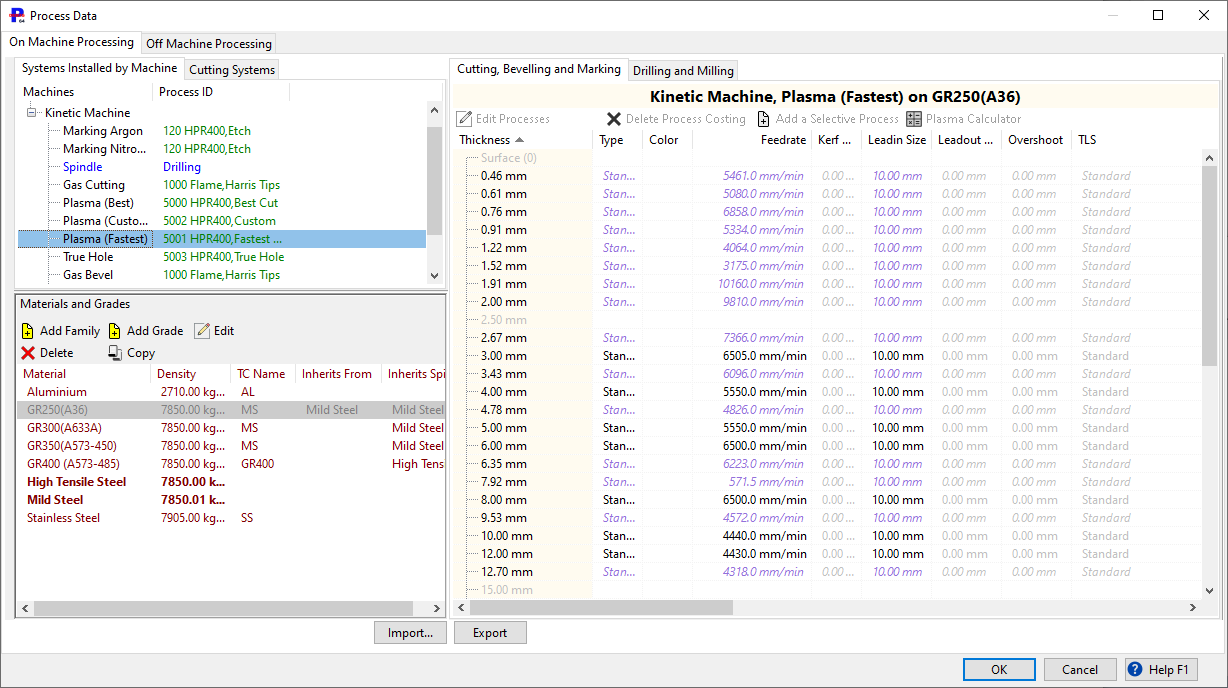At the bottom left of the Processing Data screen is the Materials window. This lists the materials that are currently loaded into the database. When you load a new plate or part you will select its material from this list. If you have to process material that is not currently in the list, then it will need to be added before you can load a plate or a part.
Material types are made up of Grades and Families. For example in your database you may want a family name of Mild Steel having GR250 and GR350 as grades belonging to that family. The purpose of material families is so you can assign the material family to a part, allowing it to be cut from a plate of any of the grades belonging to that family. To add a grade, whether or not you want to copy the details of another grade, click the Add Grade button. The dialog box that opens allows you to enter the density of the grade for costing calculations. To add a thickness click the Add button above the thickness table. If you want to copy another material's details no thicknesses need to be added (see Copying Costing Data).
Process Costing and Spindle data can be inherited from one material to another. This means that if the material doesn't have data for a process and material thickness, and the material it inherits from has data for that process and material thickness, it will use the data of the material it inherits from. Inherited values show as purple rows in the process costing window.

Representation of Grades and Thicknesses
Internally Primecut stores Grades and Thickness in two tables, a Grade table (tblMaterial) which stores the grade name, density and any other material properties, and a child table of thicknesses (tblMaterialThickness)- each thickness pertains to a particular material, so for example, GR250-10mm and GR350-10mm are distinct entries in tblMaterialThickness. In this way the system need only store available and used thickness of each grade. The Thicknesses store costing data for the thickness, and cutting, beveling and marking process data links to this table. Drilling and Milling process data links to tblMaterial.
See also
In this section:
Copying Process Data Between Materials